Laika
/23
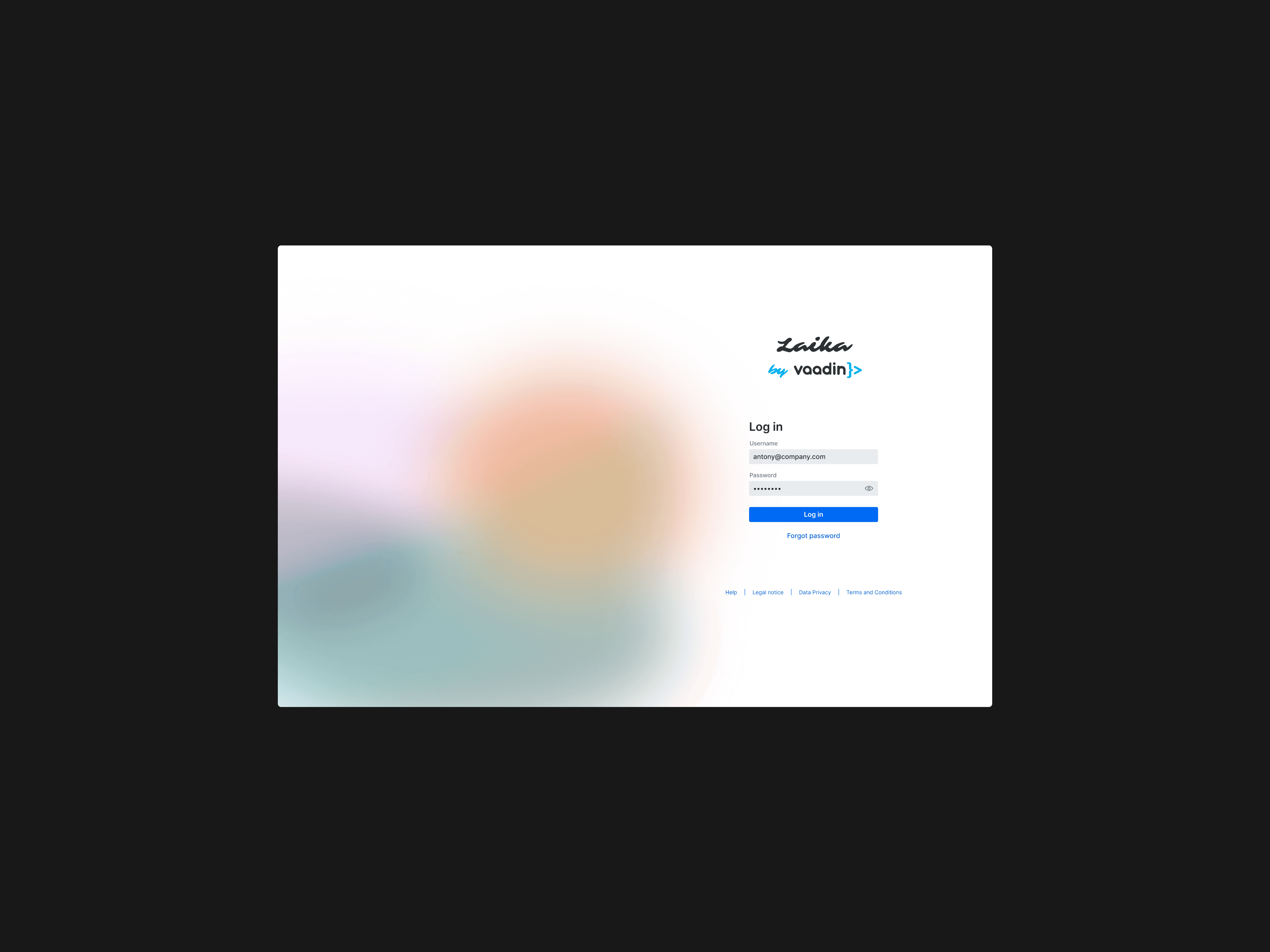
Problem
Managing projects in collaborative enterprise environments often presents significant challenges for smaller teams. Existing tools are either too complex or fail to address the specific needs of these teams, leading to inefficiencies and misalignment.
Lack of Real-Time Collaboration: Teams struggle to stay aligned due to delayed updates and limited visibility into task progress.
Inefficient Task Management: Creating, assigning, and tracking tasks often requires multiple tools, increasing complexity and reducing productivity.
Limited Insights: Users lack actionable insights into task priorities, overdue items, or potential bottlenecks, making it difficult to optimise workflows.
Laika was created to address these pain points by providing a simple yet powerful platform that integrates real-time collaboration, intuitive task management workflows, and AI-powered insights through its chatbot feature.
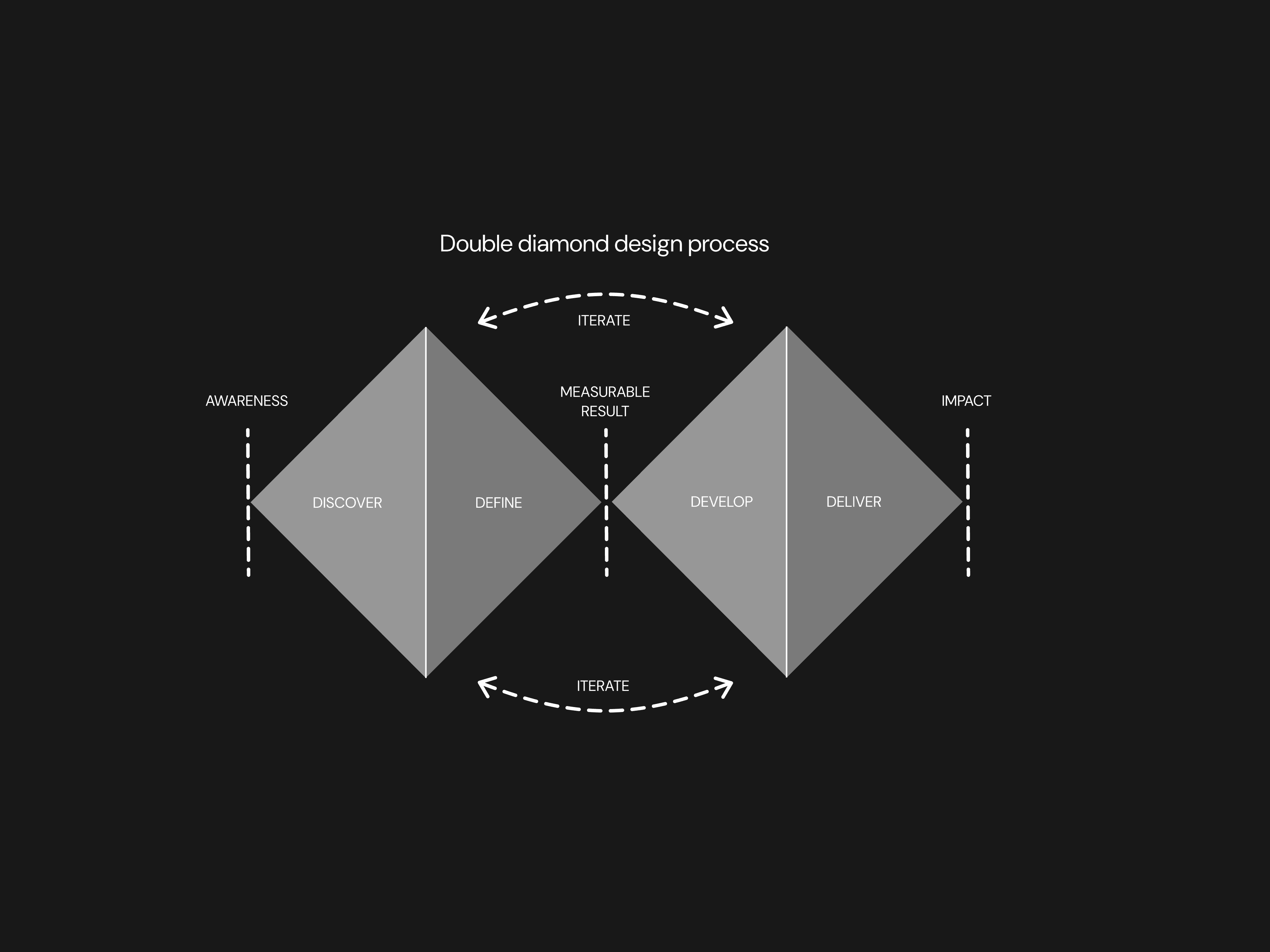
Process
The design process for Laika was driven by a combination of competitive research, prior experience with similar tools, and iterative feedback. Drawing on insights from platforms like Asana, Jira, Confluence, and Trello, I identified opportunities to streamline workflows and enhance collaboration for smaller teams within enterprises. This approach allowed me to focus on creating a tool that balanced simplicity with functionality.
Research & Ideation
To kick off the project, I conducted competitive research and analysed existing project management tools. This helped identify gaps in usability, task management workflows, and real-time collaboration features. Leveraging my experience working on similar products, I defined core user needs and crafted initial concepts for Laika. The foundation of the project was laid through research. I conducted interviews with developers, designers, project managers that worked in startups or smaller teams within enterprises—to uncover their frustrations with existing project management tools.
These conversations revealed common pain points: tools were either overly complex or lacked features for real-time collaboration and task alignment. Competitive analysis further highlighted gaps in the market, such as limited customisation options and poor integration of collaborative features.
With these insights in hand, I defined user personas and mapped out key user journeys. For example, one journey focused on how a team member could create and assign tasks seamlessly while collaborating in real time with colleagues.
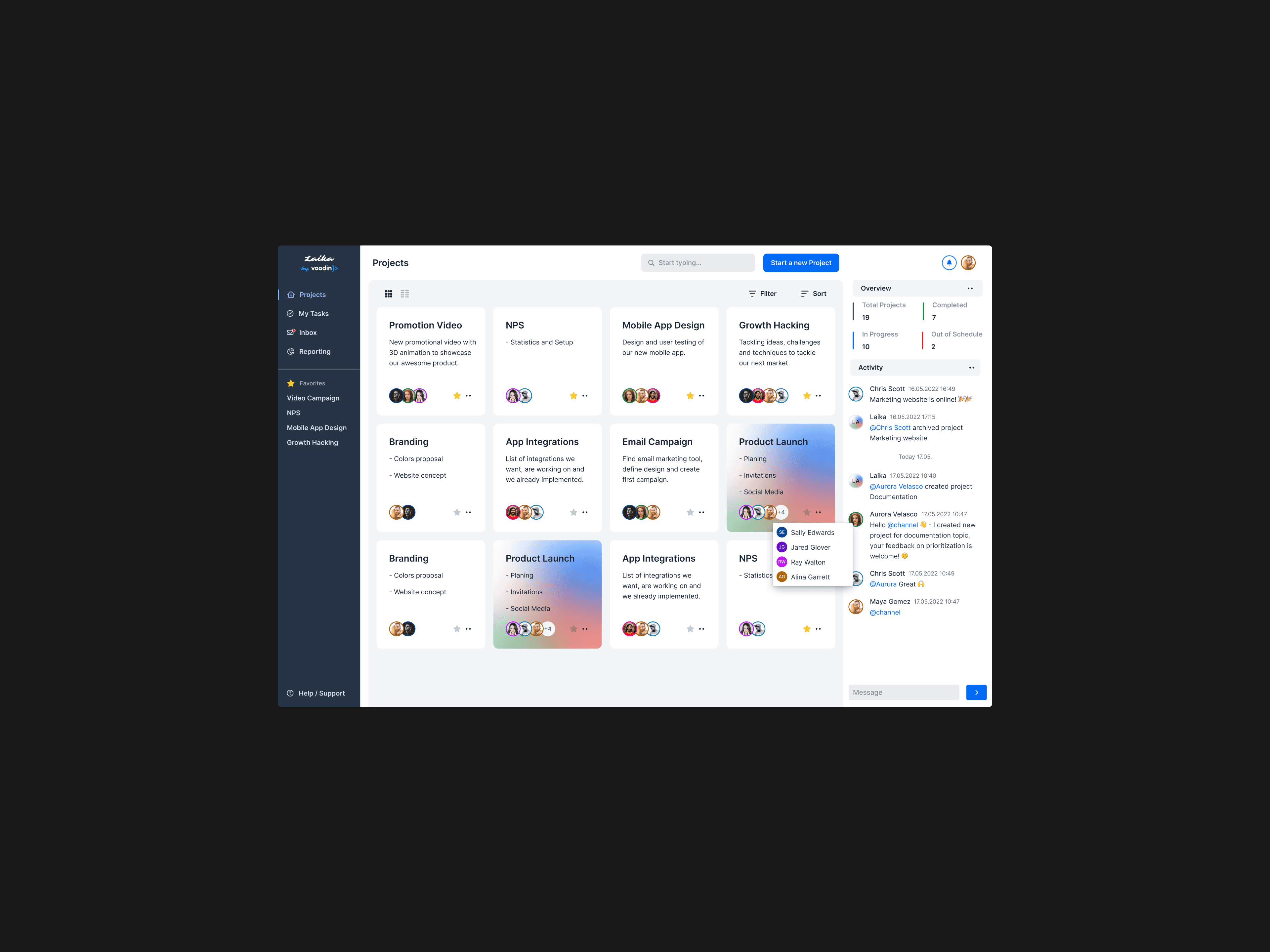
Crafting the framework
Using the research findings, I began crafting the framework for Laika. User stories guided this phase, such as: “As a Laika user, I want to create a task in my project so that I can align on work with my team.”
These stories informed the design of workflows like task creation, assignment, and tracking. I visualised these interactions through journey maps, ensuring that every feature aligned with user needs.
To support these workflows, I developed simple data flows and an information architecture that integrated Laika’s core features: task management, real-time updates powered by Vaadin Collaboration Kit, and chatbot-driven insights. This structure provided clarity on how users would interact with the platform and how information would flow between components.
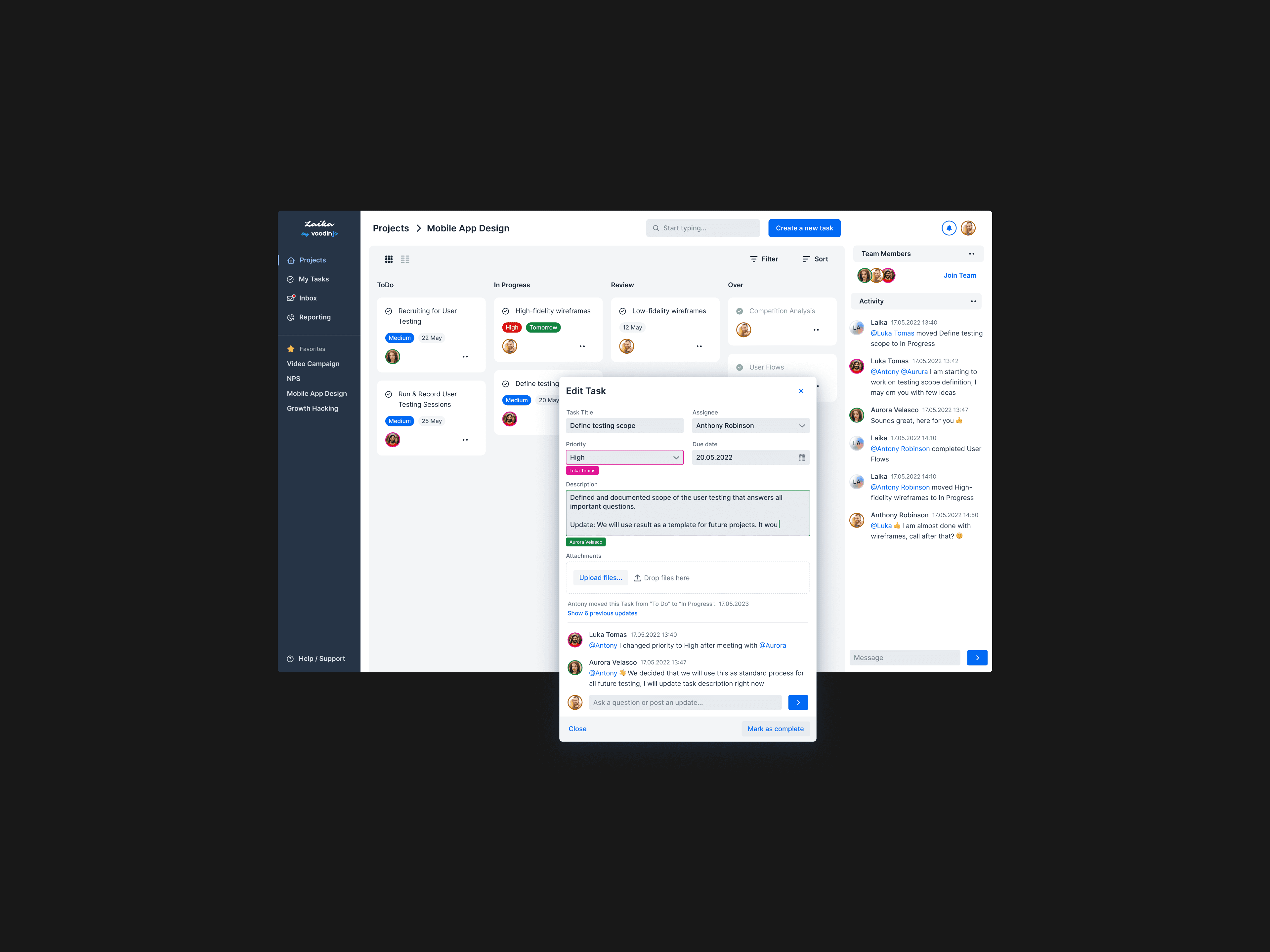
Wireframes
With a solid foundation in place, I moved into wireframing. Starting with low-fidelity wireframes, I translated user journeys into visual layouts. And iterated with few ideas on layout that can show all features in a simple and friendly way. As the designs matured, I shifted to high-fidelity prototypes that incorporated polished visuals and advanced functionality. Features like chatbot integration for task updates and predictive insights were added at this stage. Only final iteration was tested with back with my initial testers, designers, developers and product manager to validate assumptions and gather actionable feedback.
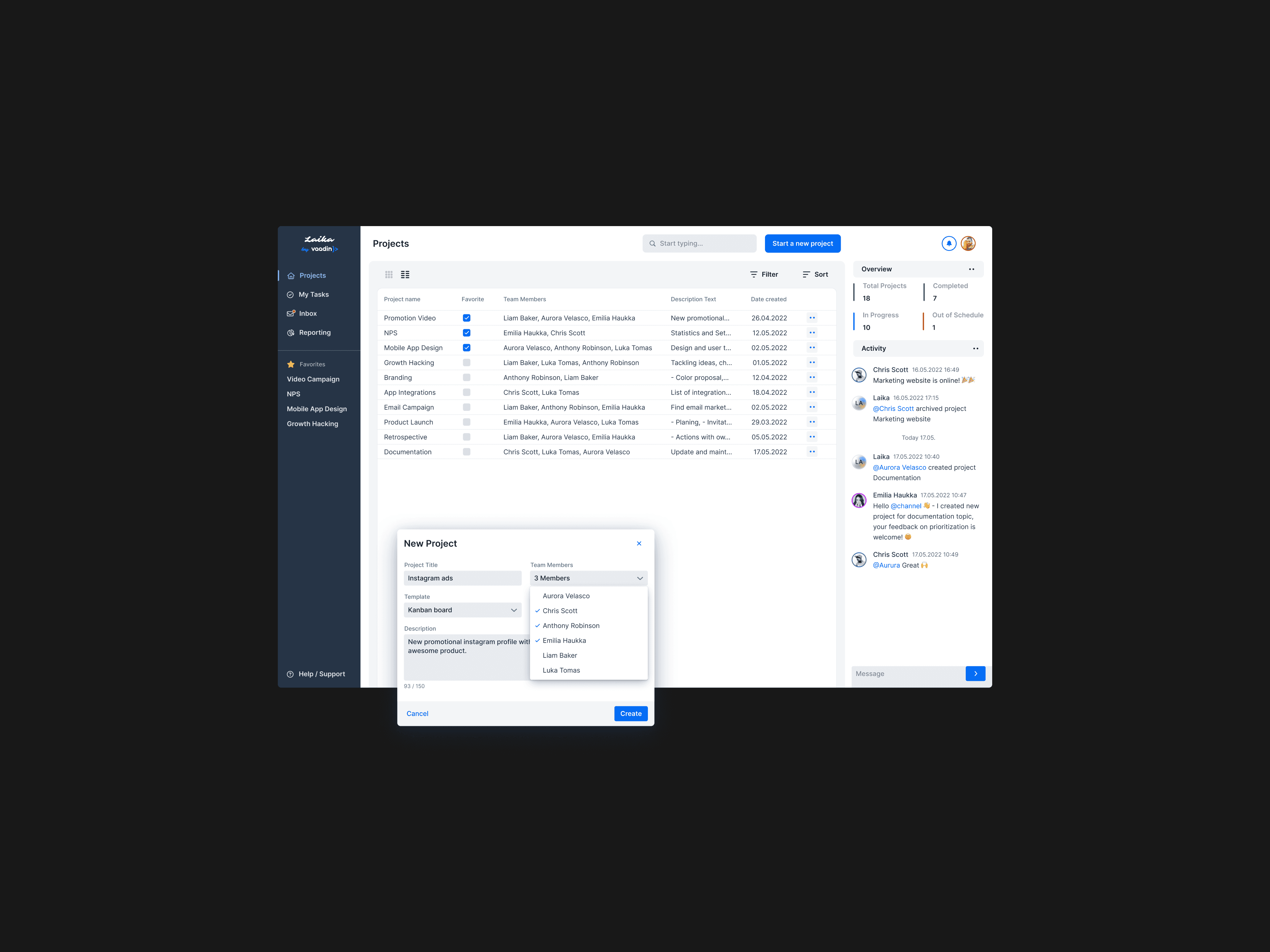
Design System
For Laika, I utilised the Vaadin Design System as a foundation, customising it to meet the platform’s specific needs. While working on the project, I identified areas where the design system could be improved to better align with modern usability standards and enterprise requirements. I provided detailed feedback to the Vaadin team, which help them to a overhaul their design system. The team incorporated my recommendations to modernised components and enhance overall consistency.

